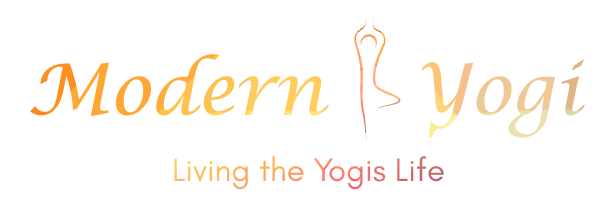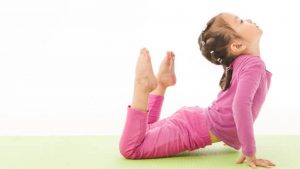The way I see the practice of yoga through my journey changes and evolves, exactly as the way I see life. As the years go by, experiences help you learn, develop, grow, bloom. I always believed that this is a never-ending journey, that we have the duty to taste different things, to challenge ourselves in difficult situations and stay open in the experiences and the possibilities of every situation. From everything that happens you take something. I think that people who bloom have this characteristic, the need to learn, challenge, develop and open, soft mind.
Recently, I read an article that explained what yoga is, according to the columnist it is a kind of mainstream exercise. I accept that from the moment the system came to the West, and it becomes a trend, it had to adjust to the needs of the market, and as far as the physical aspect of this practice is concerned alternative forms of exercise were created. For sure, the people who have involved in fitness the practice of ashtanga yoga is challenging, inspiring & attractive, and this is something beautiful because yoga is indeed an amazing way of exercising, but that’s only a small part of yoga, there are so many other important reasons to do yoga…
The most important thing for me is the essence of yoga and how it is spread, authorized or not, it is something I really don’t care. If I can’t place my leg behind the head and I have to stop there, or I can do as many poses I want with variations it is not important, as important it is to maintain the sacredness of the space, the faith in the series and the system, the concentration and the breath. Most important of all, the taste that imprints to my body and my soul the experience when it comes to an end.
I remember torturing myself on the mat during the first years of my practice. My practice was endless and I ended up tired and without any energy. I remember getting angry with my hips and my legs for not wanting to get behind the head, my knees were hurting, I was often injured and I was believing that my practice is getting deeper.. definitely I was doing many poses back then. Two full series every day, I was on my mat for two hours and a half and there was no excuse for not being there! This how it should be! Says who? I was saying to myself… I was punishing myself on the mat for other reasons that I realized later, or I was searching for my worth through the poses. If I did them I was good, if I didn’t do them I wasn’t. I was doing the same in my life, I ended up empty energetically and a victim of the situations with this approach, I was doing everything I was told, self-care and self-love were not my priorities and all of these things were mirroring on my body and at my practice. It was a dark period but also very transformative in the end. Without mud, there is no lotus.
At some point as it was expected the doubt came for the system and a strong will to quit practicing ashtanga came over me, and yoga in general, how much could this continue? Fortunately, an amazing hatha yoga teacher came on my way and told me something that changed my whole perspective (my practice changed in a slower rhythm) “Marianna, yoga is you, only you know what you should do in your practice.”
Ashtanga yoga is an amazing system, beautifully structured and designed in a way to empower and to heal the practitioner, but only if it is done in a non-dogmatic way and with the approach to serve the practitioner and not the practitioner serving the series of the poses. The Mysore room is the ideal place to adjust your practice according to your needs, that they change according to the session of your life. The series is structured in a way that you will find easy points that will boost your self-confidence and points that will challenge you and will have the opposite result. Your goal is not to quit from the practice & the effort and to love your body & yourself no matter what happens on your mat. To listen to your body and adjust your practice is yoga. Ashtanga Yoga as far as the third limb is concerned, meaning asana(the physical part) is the combination of specific movements aligned with the breath (asana & breath), the preservation of the energetic seals(bandhas), and the focus of the eyes(dhrishti), also known as tristana.

With the eyes of the teacher, I have seen bodies with serious myoskeletal problems getting healed through this practice, stopping their medical treatments and physiotherapy and standing again on their feet proud of their bodies! I have seen people with really amazing changes in their psychology and their way they live their life. Also, I have seen students in my classes terrified, placing their mat at the back of the class in order not to see them, with the hope that if they try one more time they will give another chance to the system. I have also seen a lot of students with the same style that my practice used to have, meaning really tensed, with interrupted breath and an injured body which is suffering.
Below I will give you some questions to think about.
It is true that ashtanga yoga is a difficult and demanding practice, Why we should make it harder? Why in the early years Pattabhi Jois didn’t stop the students, and later he did? Which is exactly this magical energetic reason that says that if you don’t bind/perfect the asana you can’t go to the next one? How can we define what a good bind is or whats the perfect pose? Who is capable to say that? There are bodies that are structured in a way that will never manage to do some extreme asana, and this is anatomy, they don’t have the right to be healed? The second series and all these beautiful backbends that help us stand straight are only for the few? The lucky of nature? So is ashtanga yoga a system for the elite? All this attachment to the physical part and the perfection of the asana isn’t creating a materialistic approach? Isn’t the goal of the practice to go beyond these patterns? And pranayama, meditation? Some people don’t have the right to these practices? If the system is called ashtanga(8 limbs, from the eight-limbed path of Patanjali) where are the rest 7?
And finally, what is the role of the teacher? To stop you from what you are not doing well enough? Or maybe to help you adjust the shapes for your body with safety? To guide you to a path with destination the respect and the love for your body? As teachers aren’t our goals to challenge people to become more conscious? To take responsibility of themselves help themselves and others? When we tell them all the time what to do, aren’t we pushing them in the opposite direction creating exactly what has destroyed our society and our planet? Meaning people who believe and do whatever the leaders serve them without processing, without wondering, why do I do that?
I recently wrote a text about satya, being true, and I really wonder, where are the truth and the faith to the system when you need to do other exercises and practices in order to be able to practice ashtanga. When you add so many things in and out of the series in order to keep the interest of the practitioner… Isn’t this lack of faith and a not so truthful approach to this beautiful system?

I will leave you with this, either you are a teacher, or a practitioner in ashtanga yoga remember that the only true teacher lays inside you, the absolute true teacher is called ashtanga yoga and if you let it, it will tell you what will be good for you to do and what not, all the others around you are just instructors & assistants to that… The only thing you need to do is to be there for your daily date with your practice, these 30, 60, 90 minutes that you give to yourself daily.
And this is my truth, the way I see things…
The next time that you will unroll your mat, find your own truth!
Namaste




